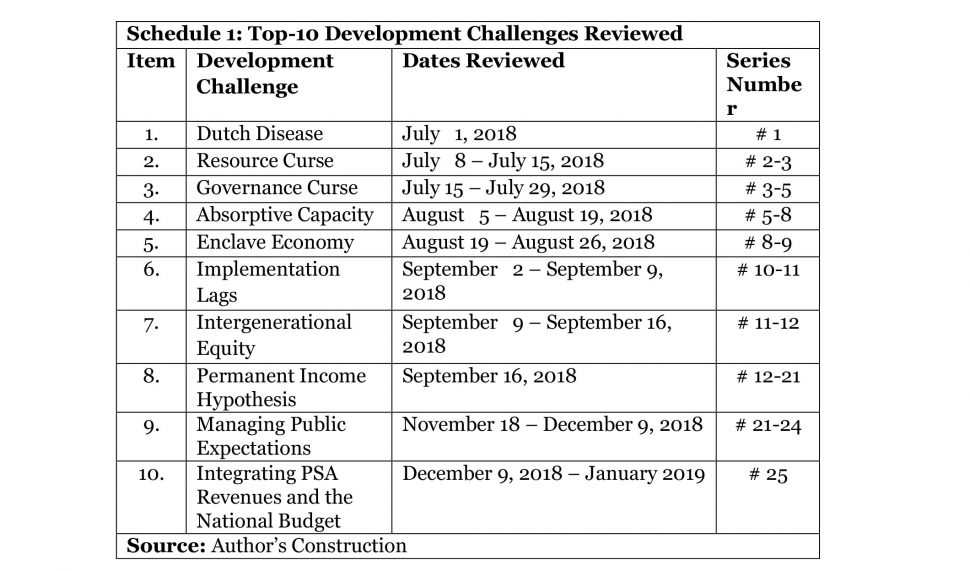Today’s column starts consideration of the final topic (number 10) on my list of the top 10 development challenges, which I anticipate that spending Government’s Take from its coming petroleum sector, scheduled to be on-stream in early 2020, will have to confront in the coming years. That topic is Integrating the Production Sharing Agreement (PSA) Revenues and the National Budget. As a complement to this task, I propose to address also, the role of fiscal stabilisation in the PSA. For this purpose, fiscal stabilisation simply refers to the deliberate insertion of a clause into the PSA, designed to deal with future changes in Guyana’s fiscal laws that may occur during the life of the petroleum project. This clause is, by intention, aimed at mitigating any risk the Contractor (Exxon and partners) faces, if fiscal law changes to the Contractor’s “detriment.” Such changes are likely to reduce the value of the Contractor’s investment.
My inclusion of fiscal stabilisation at this late stage is entirely for convenience. Up to the present, I have not found a convenient opening to introduce this topic. And, its consideration is definitely required, given the original focus of the series, as well as the course local debates have taken on Guyana’s coming petroleum sector.
Given the scope of what I have to say, I propose to address this tenth challenge in several columns lasting up to mid-January 2019. Thereafter, as earlier promised, I shall address the final topic in the overall series of columns on Guyana’s coming oil and gas industries, which to recall, started more than two years ago (September 4, 2016). The final topic will offer a Road Map for Guyana’s transformative development, based on its coming petroleum sector. The Road Map will provide a detailed explication of the so-called Buxton Proposal, which I put forward at the Buxton Emancipation Day Symposium on August 5th, 2018.


